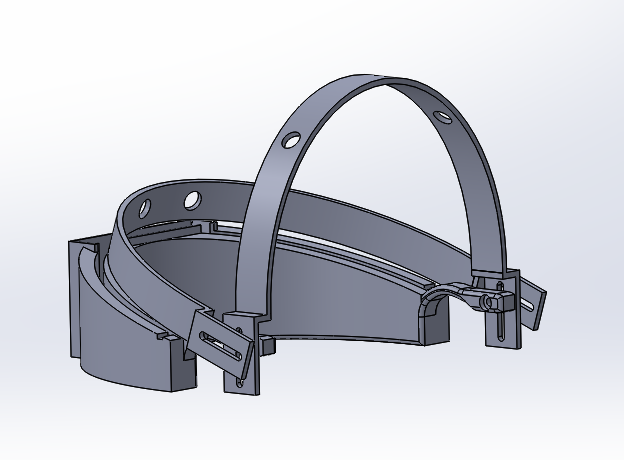Hardware
This project is based on the principle that utilizing brain activity during rehab exercises promotes cortical plasticity and provides quantitative metrics to track progress. Brain activity is observed through electroencephalography, or EEG, which is a non-invasive method of reading the brain’s electrical signals. When combined with Brain-Machine Interface (BMI) algorithms, EEG becomes a powerful tool to allow the translation of brain signals into movement of an upper limb robot, which is used to retrain the brain for movement.

EEG caps use electrodes to observe the electrical activity in the brain. Electrodes can be grouped into two subcategories: wet and dry. Wet electrodes use conductive gel that is used to connect electrodes to the scalp through the hair. Dry electrodes must make direct contact with the scalp, and as a result, the dry electrode caps use pressure to keep the electrodes on the scalp. Historically, wet EEG caps have offered a better signal to noise ratio, but major advances have been made recently to improve the signal quality of dry electrodes. Wet electrode caps are often time-consuming, messy, and nearly impossible to do independently. Furthermore, it is difficult for dry electrodes to maintain a good connection on the scalp and often feature higher impedance readings.
This project features a custom designed EEG cap to create a device that works well for stroke patients. A feasible product must satisfy the following requirements: low-cost, safe and non-invasive, effective, quick and easy to set-up, and comfortable. Current cap models often start at several hundred dollars on the market, which is often impractical for common use. This design uses 3D printed materials and minimizes unnecessary components for cost-efficient manufacturing. The first prototype of the cap has just been completed and can be seen below. The cap holds Brain Products ActiCap gel electrodes, but can be easily modified to hold other types of electrodes. The cap is printed using standard PLA material on an Ultimaker 3 printer. The device is unique in its modularity to add, remove, or change bands depending on needs of the patient. It may be custom printed based off the sizes of different people’s heads.

